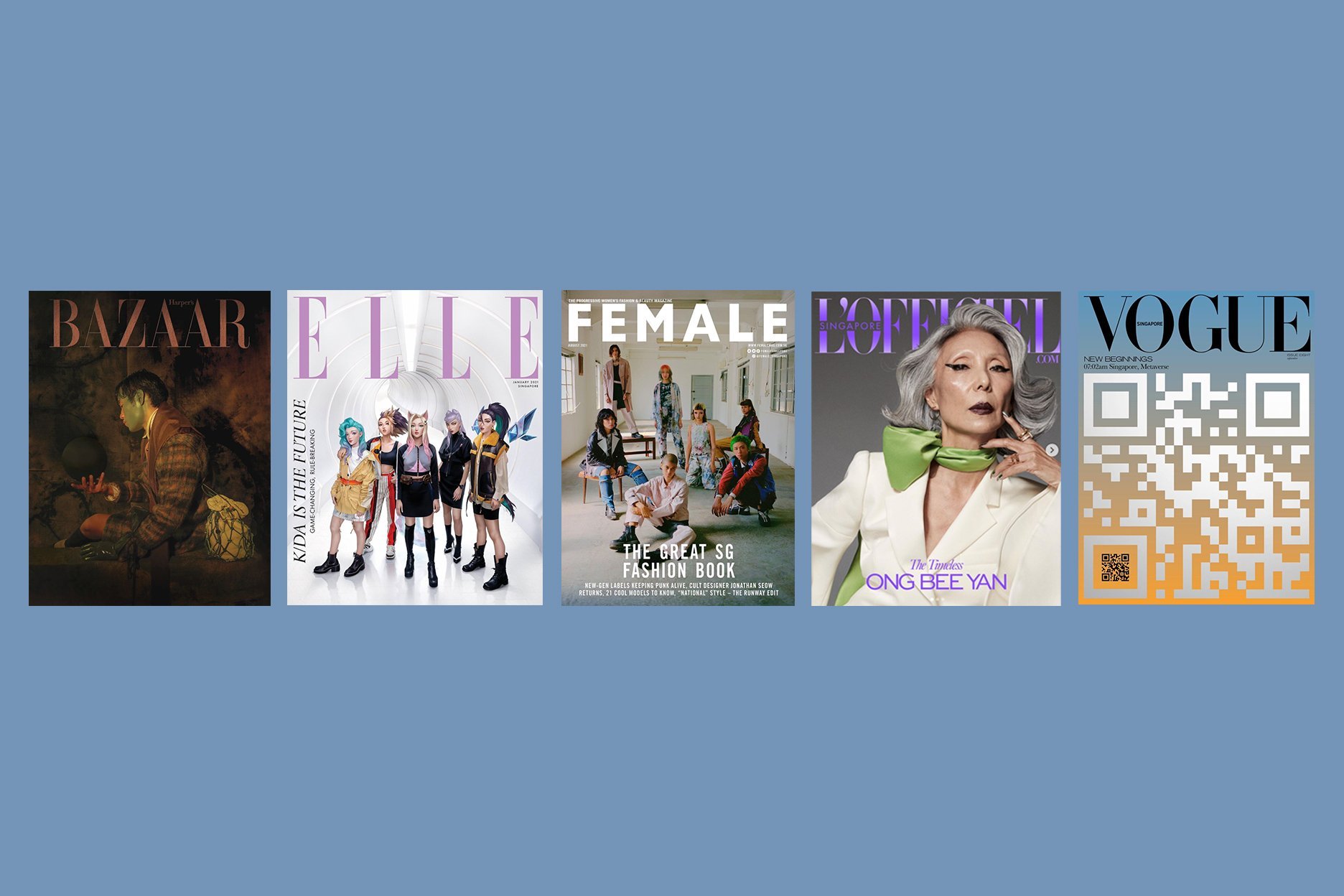Craftsmanship in Indonesia: Studio Jeje
Angelita Nurhadi speaks about Janur
By Sharrona Valezka
A recent study by market and research data provider, Research and Markets, reported that there has been a significant increase in global demand for handcrafted items in recent years, reaching a value of USD718 billion in 2020. Indonesia is home to hundreds of local textile artisans from all over the archipelago. A new generation of local brands has turned a one-way relationship with the artisans into something based on learning and collaboration. Instead of simply outsourcing, these brands involve craftspeople in the process. In this article, I look at the practice of Studio Jeje to dive deeper into the concept of artisanal fashion and its capabilities of weaving relationships between designers and a community of artisans, breathing new life into traditional crafts.
An impact report compiled by Indonesian social enterprise SukkhaCitta aims to document the social, economic, educational and environmental effects that they have generated in artisan communities in Java and Bali. It shows that many individuals in the community choose not to continue the craft. Although they are proud of their family’s tradition, when faced with the realities of the job, they realise that they would not be able to support themselves if they were to follow in their family’s footsteps.
Angelita Nurhadi, the founder of Studio Jeje, a Jakarta-based artisanal womenswear brand established in 2018, shared a similar discovery that prompted the start of her brand. Traveling on a project that required her to visit different communities of textile artisans in various parts of Indonesia, she discovered that the younger generation in the artisan community in Tasikmalaya that practises embroidery were not keen to continue because they were not able to earn a wage that can cover basic necessities. “Having learnt this, I felt sad and worried about the fact that the beauty of this craftsmanship will gradually become extinct,” Angelita expresses. “This has motivated me to reintroduce traditional Indonesian techniques of textile-making.”
One of Studio Jeje’s efforts in achieving their goal is by expanding their brand presence through the use of social media, using Instagram as a platform that enables their consumers to feel more “connected” to their brand. In addition to featuring their campaign images and editorial features that depict strong visuals, the brand’s marketing strategy relies on lifestyle-based bite-sized content consisting of curated playlists, styling tips and collaborative stories with local creatives.
Studio Jeje social media. Image courtesy of Studio Jeje.
Additionally, Studio Jeje reinterprets the craft by combining handcrafted textiles to contemporary designs that align with current tastes. Their collections boast a modern and versatile silhouette, with intricate details of the traditional techniques applied to the fabrics, working with various kinds of traditional textile-making techniques from embroidery and hand-weaving to beadings.
Their latest collection, ‘Janur’, was released in 2020 and consists of 15 looks. Most of the collection pieces use a particular embroidery technique called kerancang, practised by the Minangkabau ethnic group in Bukittinggi, West Sumatera. Known for its intricacy and time-consuming process, kerancang differs from other types of embroidery as it features unique “holes” formed from the interwoven threads. Instead of using pre-embroidered appliqués, the technique is applied directly to the fabric. Angelita worked with artisans in Tangerang who know how to apply the kerancang technique. Other than this specific technique, Studio Jeje’s Janur collection also features other embroidery techniques such as 3D appliqués as well as flat embroidery that they developed as patterns.
Janur 2020 Collection: Pitch black kerancang top (left) and pitch black phoenix embroidered kimono (right). Image courtesy of Studio Jeje.
Studio Jeje draws deeply from the history and traditions of Java. “The Janur collection was inspired by my Javanese roots,” says Angelita. “The idea was derived from local beliefs about Janur, a young leaf of a coconut tree that symbolises the sacred heart, prosperity, and divine wishes.” From there, Angelita and her team developed the concept further through research and observation. After the concept was finalised, they started to create mood boards and colour schemes, followed by garment sketches and textile designs.
Janur collection concept boards. Images courtesy of Studio Jeje.
Then, the final designs and technical drawings are passed to the artisans for them to create the samples. The sampling process is the most time and energy-consuming, yet the most important step of production. “During the process, I visit the artisan community twice a week to oversee the process directly. It makes it so much easier for me to communicate with them in person, and we do a lot of brainstorming to achieve the best results for the collection.” she elaborates. After the garment sampling is done, the team then proceeds to do quality control to see if the garments need to be reworked.
Janur collection sketches and fabric sampling. Images courtesy of Studio Jeje.
Finally, the last step of the process is the garment production. In total, the Janur collection took eight to ten months from the initial concept development to the final garment production. Angelita emphasises that the time required for each collection differs, depending on the fabrics and techniques used for the particular collection. The intricate nature of the craft makes it prone to imperfections, but it is the very complexity of the production process that enhances the final products’ value. Due to the labour-intensive nature of the production process, Studio Jeje releases their collections annually.
“The intricate nature of the craft makes it prone to imperfections, but it is the very complexity of the production process that enhances the final products’ value. Due to the labour-intensive nature of the production process, Studio Jeje releases their collections annually.”
Studio Jeje Janur collection campaign images. Images courtesy of Studio Jeje.
Although the artisan partners of Studio Jeje are not entirely involved in the creative process, as the sketches are done in the studio by the brand’s internal team, Angelita explains that she is always open to exchanging ideas, and the artisans are more than welcome to express their creative inputs. “I was very lucky to have found local artisans who are open to new ideas and can easily collaborate with us,” she remarks.
The finished garments brought satisfaction not only for Angelita and her team but for the artisans as well. “Seeing our designs come to life, we all feel pleased with what we have achieved together,” she says. A challenge Studio Jeje faces is building and maintaining a long-term relationship with the artisans. As both the brand and community rely on one another, connecting with the artisans is an important aspect to facilitate a long-term collaboration. After running a few production trials with potential artisans, it took Angelita a year to decide on artisans who were able to meet the brand’s standards. Currently, Studio Jeje’s team of artisans consists of four Tasikmalayan craftspeople who specialise in embroidery and four beading artisans who are also housewives, based in South Tangerang, near Jakarta.
While Angelita herself learnt to be more patient in directing her team of artisans along the production process, the artisans also learnt how to create new silhouettes they have never encountered before. “Working with the artisans is a very interesting experience as there are a lot of things that we can learn when we work with them directly,” she recalls. “I learnt how to be open to new ideas as they are the ones producing the work, and together, we explore new ways to achieve our goals together.” In the end, the collaboration turned out to be a learning process for both Studio Jeje’s team and the artisans.
Despite the challenges, handcrafted artisanal fashion continues to rise in Indonesia with consumers switching from mass-produced items to handcrafted labels that offer irreplaceable value while providing a sustainable alternative. “If it does not start from us, who else is going to preserve our own culture?” asks Angelita. This collaboration between fashion brands and local artisans not only sustains the future of age-old crafts and their communities.
Visit Studio Jeje here and @studiojeje on Instagram.















